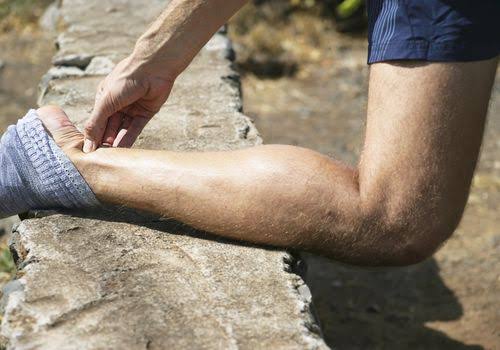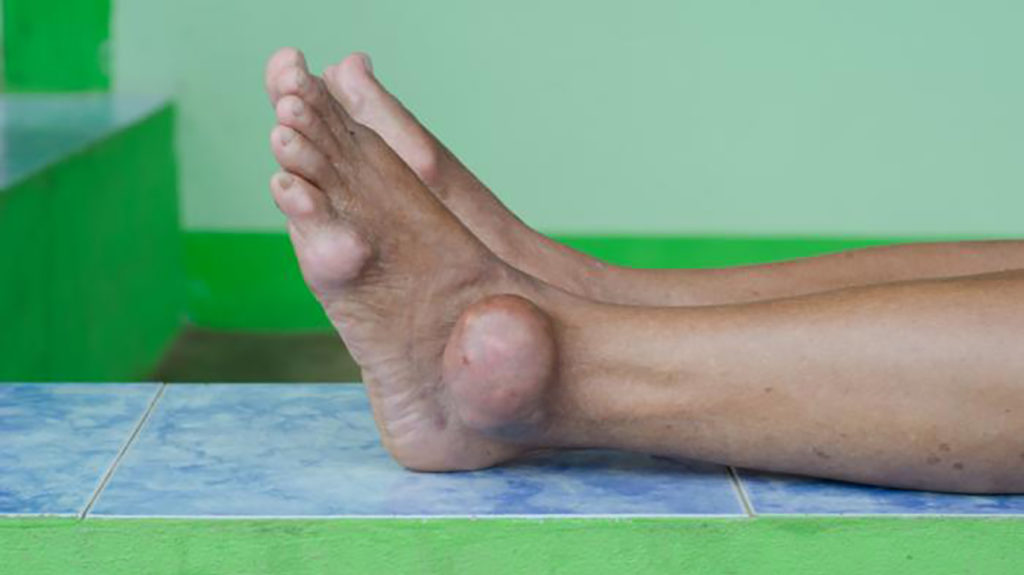For many reasons, a person’s ankle can hurt, from minor injuries to chronic medical conditions like arthritis.
Ankle pain can be caused by a variety of bone , muscle, and soft tissue structures which support the ankle.
The pain may feel like sharp, shooting pain or a dull ache, depending on the cause. People can also experience swelling around the bone of the ankle.
A common cause of ankle pain is mild injury, such as ankle strains and sprains. People are often able to treat minor injuries at home but they should see a doctor for suspected medical conditions or accidents that interfere with their everyday lives.
This article discusses some common reasons why the ankle of a person can hurt, and how to relieve the pain.
Achilles tendon rupture

The Achilles tendon is a strong tissue band which connects the bone of the heel to the muscle of the calf. The tendon may tear or rupture due to excessive strain during running or exercising, or after falling.
Taking corticosteroids or certain antibiotics, including fluoroquinolones such as Cipro, may also increase a person’s likelihood of developing a tendon rupture.
Symptoms of a rupture in the Achilles tendon include:
- a reduced range of motion
- pain that occurs suddenly in the ankle or calf
- a popping or snapping sensation in the ankle
- problems standing on tiptoes or walking up stairs
- swelling on the back of the leg or ankle
In many cases, an Achilles tendon rupture requires surgery to correct.
Ankle fracture
An ankle fracture is a break between one or more of the ankle bones, such as the tibia or fibula. One clean break can be the fracture, or it can break the bone into smaller pieces.
Symptoms of an ankle fracture include:
- pain that can radiate throughout the lower leg
- swelling at the ankle and beyond
- blistering over the injury site
- difficulty walking and moving the foot a broken bone pushing against the skin
Treatments for an ankle fracture depend on the severity of the injury and where the fracture is located. Surgery isn’t always required.
Ankle sprain or strain
Sprains and strains are both sorts of damage to soft tissue. Depending on severity, both of these can cause significant pain and discomfort.
A sprain is an overstretching or tearing of a ligament, a band of tough tissue that joins bones. Sprains can range from partial to complete.
A strain is a muscular or tendon injury. Tendons are hard cords which bind muscle to bone. Strains can vary from a small overstretch to a full tear.
The ankles are a common sprain and strain area, as they are a complex joint that endures a lot of everyday movement.
Symptoms of an ankle sprain or strain include:
- a popping or snapping sound
- instability of the ankle joint
- swelling
- tenderness
These types of injury, such as playing a sport or running, usually occur during physical activity.
Gout

Gout is a type of arthritis that occurs when uric acid crystals build up in the body. Gout commonly affects the foot and ankle, especially a person’s big toe.
Symptoms of gout include:
- pain that is usually worse at night or immediately after waking up
- swelling around the ankle
- warmth over the ankle joint
Persons with a gout family history are more likely to get the condition. Other conditions that increase the risk of gout include diabetes , obesity, hypertension. Taking medications like diuretics or niacin may also increase the risk.
Infection
A previous cut, trauma, or surgery can result in bacteria entering the skin or joining around the ankle and causing infection.
Symptoms of an ankle infection include:
A doctor can prescribe intravenous or oral antibiotics, depending on the severity of the infection. People should try to get the infection treated as quickly as possible to ensure it doesn’t get worse.
Osteoarthritis
Arthritis in the ankles is a wearing down of the protective cartilage. It can cause the bones to rub against each other causing discomfort and weakness in the ankle joints.
Symptoms of osteoarthritis include:
- ankle pain
- growth of bony areas over the ankle joint
- stiffness
- swelling
- trouble walking or bending the ankle
Osteoarthritis gets worse over time, but treatment can slow down or stop the progression of the condition.
Flatfoot disorder
Acquired flatfoot disorder, also called fallen arches or posterior dysfunction of the tibial tendon, usually only affects one foot and is a tendon disorder that supports the arch of the foot.
Flatfoot trouble causes the foot arch to come into contact with the ground.
Symptoms of flatfoot disorder include:
- flattening of the foot’s arch
- pain on the outside of the foot
- pain when doing activities that challenge the tendon, such as hiking, climbing stairs, or running
- rolling the ankle inward, or overpronation
- swelling around the foot and ankle
In general, flatfoot disorder is progressive, meaning it gets worse over time. However, with nonsurgical treatments, doctors can often rectify it.
Rheumatoid arthritis

Rheumatoid arthritis is an autoimmune disorder which causes an attack on joint linings called synovium by the immune system.
An estimated 90 percent of people with rheumatoid arthritis experience problems with their feet and ankles, according to the Arthritis Foundation.
Symptoms of rheumatoid arthritis include:
- difficulty moving the ankle
- pain
- swelling
The condition can also affect the joints of the hands, wrists, back and others. Rheumatoid arthritis gets worse over time but by taking certain medications, people can control their symptoms and prevent progression of the condition.
When to see a doctor
If a person has an injury that limits their ability to move their foot and ankle, they should see his doctor. If they suspect the ankle is broken they should seek emergency care.
People should see a doctor only when signs of ankle pain intensify rather than improve.
Diagnosis
The doctor will conduct a physical foot and ankle exam for any visible deformity, symptoms of infection and skin changes.
A doctor can also perform the following tests to assess the source of ankle pain:
- imaging studies, such as X-rays, CT scans, or MRI scans
- blood tests, which can help diagnose rheumatoid arthritis, gout, and infections
- skin or fluid samples to test for the presence of bacteria, fungi, and viruses
Treatments and home remedies
Ankle pain therapies are based upon the underlying cause. A doctor typically treats an ankle infection with prescription antibiotics, for example. Drugs may also be prescribed by doctors to help control medical conditions like gout and rheumatoid arthritis.
Doctors would usually prescribe taking over-the-counter ( OTC) pain medication for injuries, resting, and exercising to improve recovery. However, serious injuries and trauma to the ankle may require surgery.
Home remedies
RICE method is one main treatment for minor injuries. Patients at home may use this approach to alleviate discomfort and swelling around the ankle.
RICE stands for:
- Rest: Resting the affected ankle joint allows it to heal and lessens the extent of damage.
- Ice: Applying ice to the affected area can help minimize swelling. Apply a cloth-covered ice pack for 10–15 minutes at a time several times per day.
- Compression: Wrapping the ankle or applying a compressive brace can help minimize swelling and provide support, which reduces the risk of causing further damage.
- Elevation: Using several pillows to elevate the ankle can support it and promote blood and fluid flow toward the heart.
Taking OTC pain relievers such as acetaminophen and ibuprofen may also help minimize discomfort.
Changing one’s shoes can also help can foot and ankle pain in a person. Wearing supportive shoes with a wide toe box can ease pressure on the ankle and reduce the likelihood of future ankle pain.
A doctor can often suggest using a special insert known as an orthotic insole. These vary from soft to rigid in consistency, and help support the feet.
According to a paper that appears in the journal Seminars in Arthritis and Rheumatism, among other medical conditions, footwear treatments such as orthotics are scientifically known to benefit people with rheumatoid arthritis and gout.
Outlook
Many kinds of injury and medical condition can damage a person’s ankle.
When ankle pain affects a person’s everyday activities, they should consider seeing a doctor. Before an injury, condition or infection worsens, doctors can diagnose and treat potential causes.





